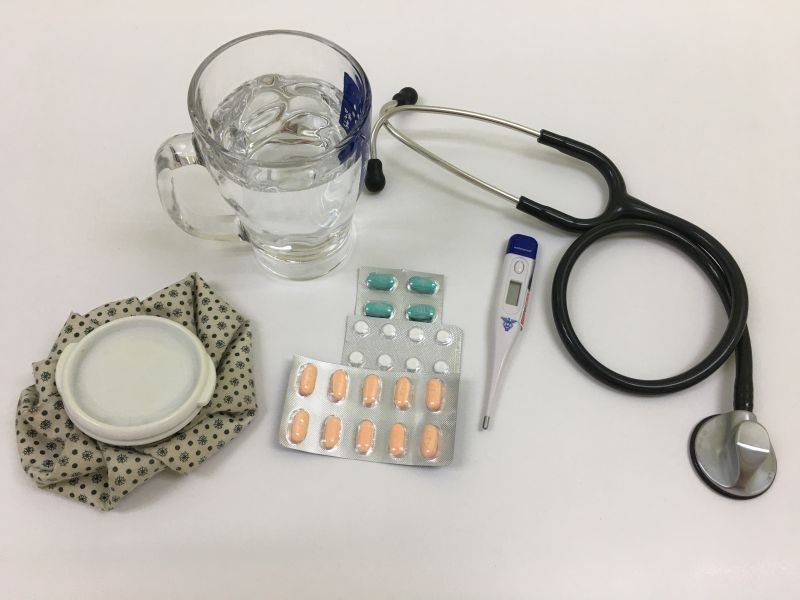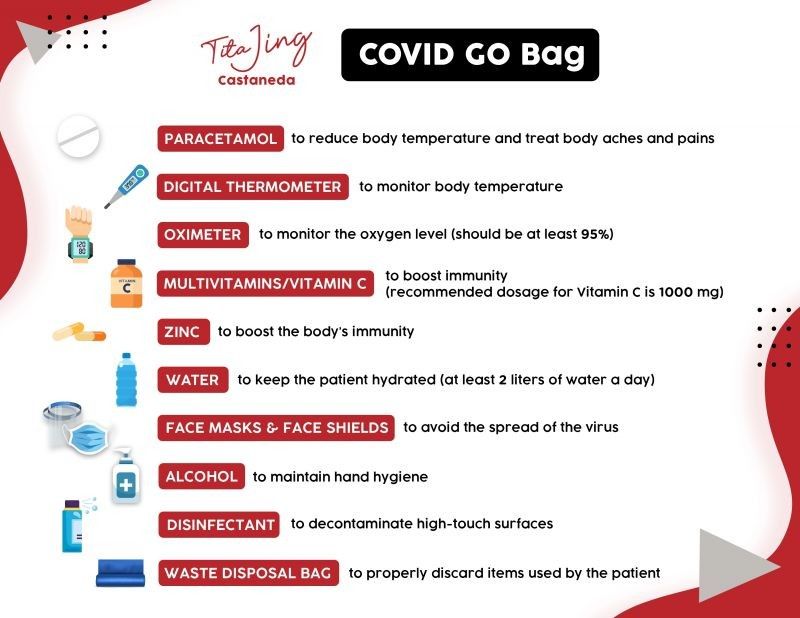The Hows of Jing: Care essentials for COVID-19 patients at home


The race against the coronavirus gets tighter by the day. Data from the Health Department Saturday reveal that there are over 190,000 active cases all over the country, mostly from the National Capital Region. The virus has so far claimed the lives of over 14,000 Filipinos. The cases and deaths hit close to home. We see our friends, or friends of friends post on social media about COVID-related deaths in their family circle.
Authorities are still scrambling to ease the case surge, yet vaccines are rolling out at a snail’s pace. This is in contrast with the spread of questionable information online.
While technology has bridged the physical and geographical gap among us, misinformation and disinformation are threatening what’s supposed to be a united front against the virus. As the COVID-19 fight involves everyone, we are responsible for arming one another with the right knowledge on how to beat this unseen enemy. Accurate information becomes even more important as our healthcare facilities are getting overwhelmed with cases, and COVID-19 patients are now forced to do home care.
A lot of thoughts are probably running through our head right now. What should I do if someone in my household gets infected with COVID-19? Should I immediately bring this person to the nearest testing center for a swab test? What COVID essentials should I always have on standby?
To answer some of these questions, I invited Dr. Naida Javier-Uy, the chief medical officer and senior vice-president of Cardinal Santos Medical Center, in a recent episode of Pamilya Talk.
Home care
Dr. Javier-Uy says there are no more COVID “suspects” coming to the hospital these days. “Puro positive na, at pami-pamilya,” she tells me. There would even be one household with five or six positive cases.
Clearly, with the situation in our hospitals now, going for an in-clinic checkup isn’t advised, unless the patient needs urgent care. Our expert says if a person is COVID positive, it doesn’t mean that he or she should get admitted in the hospital for medical care.
If the individual is asymptomatic or has mild COVID symptoms and has no comorbidities, close monitoring of his body temperature, blood pressure, heart rate and oxygen saturation can be done at home. But doctors also assess if his residence is conducive to home care. A COVID positive patient should have a separate room and bathroom so that isolation can be implemented properly. The room where the patient is staying should have a good air flow, with a door that can be kept shut. There should also be a good delivery system for the daily needs of the patient. Contact with the infected or isolated individual should be avoided as much as possible.

Even if the patient avails of home care, it is imperative for him to still be monitored by a doctor continuously. At the Cardinal Santos Medical Center, they offer telemedicine for COVID positive patients. “That way, hindi magpa-panic ang pasyente kasi may expert opinion and guidance,” she says. (To inquire about the hospital’s COVID Care at Home, call their hotline at 8727-0001 loc 3005 Monday to Fri 7 a.m. to 4 p.m.)
The primary care physician will assess the patient’s situation (mild, moderate, severe) and will recommend tests that should be done. The patient’s condition will also be monitored daily by the doctor. My research tells me that other hospitals like The Medical City and St. Luke’s Medical Center also offer telemedicine and home care services now.
When to get a swab test
I asked Dr. Javier-Uy what should be done in case we got exposed to a COVID positive patient. The knee-jerk reaction, she says, is to have a swab test right away. But her advice is this: If you are symptomatic, it is highly recommended that you get a swab test. But if you are asymptomatic, you can wait and observe first. She recommends getting a swab test on Day 5 to Day 7 after exposure to the COVID positive patient. If the result turns out negative, you can go about your usual life as a non-COVID patient.
What to pack in your COVID-19 Go Bag
Preventing COVID-19 infection is like preparing for a storm — it begins at home. And having a COVID care kit helps you keep the virus at bay.

Here is a compilation of what should be in a COVID-19 Go Bag, based on my interviews with different health professionals like Dr. Javier-Uy.
Home care reminders
Dr. Javier-Uy cautions about the prevailing myth on practicing steam inhalation, which could pose danger since it could spread the COVID virus through droplets.
In an online forum “What to do When Covid Hits Home” organized by the Santuario de San Antonio Parish, Dr. Anna Lisa T. Ong-Lim, Professor and Division Chief at the Infectious and Tropical Disease Section University of the Philippines-Philippine General Hospital (UP-PGH), also advises against this practice. She says steaming is not proven to be helpful for COVID prevention and can also cause damage to the lining of your mucosa (the moist tissue that lines certain parts of the inside of the body), which can predispose you to even more infections.
Dr. Javier-Uy also stresses that the use of oxygen tanks must be done under the supervision of a health professional because the required settings for this equipment vary per person. “Usually we recommend oxygen tanks for patients with chronic obstructive lung disease, not for COVID,” she says. She also doesn’t vouch for the oxygen in a can that’s available in the market, because “you can’t even measure how much oxygen you’re taking in.”
Fighting the info-demic amid the pandemic
Looking at the bigger picture, the pandemic is not just a battle against a deadly virus, but also a battle against false information. And science and facts are our greatest armor. We are in a time when words weigh more than usual, so the challenge is to be more discerning of what we see and hear, and to be brave to call out mistakes when we see them.
Watch the full episode of Pamilya Talk through this link: https://www.youtube.com/watch?v=1DW3gutzZUw
--
I’d love to hear from you! Share your stories and tips or suggest topics at jingcastaneda21@gmail.com. You can also follow my social media accounts: Instagram, Facebook, Youtube, Twitter, and Kumu.



















